Baroque furniture or baroque style furniture?
Baroque furniture, often known for its opulence and grandeur, represents one of the most influential periods in the history of interior design.This article delves into the intricate world of Baroque furniture, exploring its defining characteristics and the distinguishing features of the Baroque chair, a quintessential element of this style. We will journey through the opulent palaces and stately homes of France and Italy, comparing French Baroque furniture with its Italian counterparts to uncover subtle yet significant differences in design and craftsmanship.

The evolution of Baroque furniture continues with an examination of the iconic Louis XV and Louis XVI styles, each bringing its unique flair to the Baroque tradition. The Louis XV style, renowned for its rococo elegance and intricate ornamentation, contrasts sharply with the more restrained and classical lines of the Louis XVI style. Both styles have left a lasting impact on Italian furniture design, influencing contemporary creations that blend historical elegance with modern functionality.
In the realm of restaurant furniture, the influence of Baroque design is evident in the use of lavish detailing and rich materials that create an atmosphere of luxury and sophistication. Baroque-style chairs and tables, with their elaborate carvings and sumptuous upholstery, provide an elegant setting for fine dining experiences. Italian manufacturers, known for their craftsmanship, produce these exquisite pieces that elevate the dining ambiance, making every meal an event to remember.
Hotel furniture, too, benefits from the grandeur of Baroque-inspired designs. From opulent lobby furnishings to elegant guest room pieces, Baroque furniture adds a touch of magnificence to hospitality spaces. Italian Baroque furniture, in particular, brings a sense of history and artistry, transforming hotels into palatial retreats where guests can experience unparalleled luxury.
Join us as we explore the grandeur of Baroque furniture, tracing its historical roots and understanding how these timeless pieces continue to influence modern interior design.
Whether you're a collector, enthusiast, or simply curious about Baroque-style furniture, this comprehensive guide offers valuable insights into the artistry and legacy of this magnificent era. Discover how Italian Baroque furniture continues to shape the aesthetic of contemporary hotel and restaurant interiors, merging the past with the present in a celebration of beauty and craftsmanship.
Baroque chairs and armchairs are characterized by their elaborate and ornate design, reflecting the grandeur and opulence of the Baroque period. Key features of a Baroque chair include:
Intricate Carvings: Baroque chairs often feature detailed carvings, including floral motifs, scrolls, and cherubs. These carvings are typically found on the legs, arms, and backrest of the chair.
Curved Lines: The design of a Baroque chair emphasizes dramatic curves and flowing lines, creating a sense of movement and fluidity. This can be seen in the cabriole legs and the curved backrests.
Luxurious Materials: High-quality materials are a hallmark of Baroque chairs. They are often made from rich woods like walnut or mahogany, and upholstered in luxurious fabrics such as velvet, silk, or brocade.
Gilding and Embellishments: Many Baroque chairs feature gilded accents, often with gold leaf, adding to their luxurious appearance. Additional embellishments might include inlaid wood, mother-of-pearl, or metal details.
Comfort and Grandeur: Despite their opulent design, Baroque chairs are also built for comfort, with padded seats and backs that provide a plush seating experience.
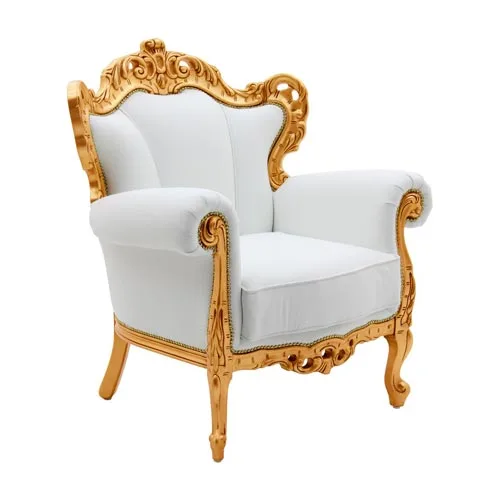
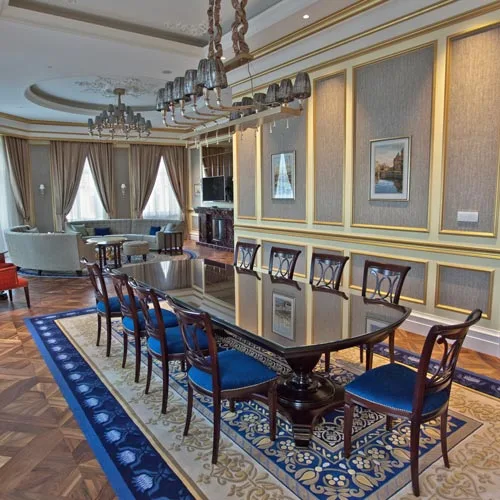
Ideal Use in Hotels, Restaurants, and Luxurious Villas
Aesthetic Appeal: The lavish design of Baroque chairs adds an immediate sense of luxury and sophistication to any space. In hotels and restaurants, they create an ambiance of elegance and exclusivity, which can enhance the overall experience for guests.
Statement Pieces : Baroque chairs serve as statement pieces that can elevate the interior decor of a venue. In opulent villas, they complement other luxurious furnishings and contribute to a cohesive, grand design scheme.
Comfort and Durability : Beyond their visual appeal, Baroque chairs are also known for their comfort and durability. The high-quality materials and craftsmanship ensure that they can withstand frequent use in commercial settings such as hotels and restaurants.
Versatility : While they are undeniably luxurious, Baroque chairs can be versatile in their application. They can be used in dining areas, lobbies, lounges, and even as accent pieces in suites or private dining rooms, making them a practical choice for various settings within hotels and restaurants.
Historic Charm : Incorporating Baroque chairs into modern settings provides a blend of historic charm and contemporary luxury. This fusion can create a unique and memorable atmosphere that distinguishes a venue from its competitors.
In conclusion, the intricate design, luxurious materials, and versatile application of Baroque chairs make them ideal for enhancing the ambiance of hotels, restaurants, and luxurious villas, ensuring both aesthetic appeal and guest comfort.
For those seeking to incorporate timeless elegance into their spaces, classic chair inspired by Baroque design offer the perfect blend of artistry and comfort. These chairs, characterized by graceful curves, ornate carvings, and luxurious upholstery, serve as striking focal points in both traditional and contemporary interiors. Italian artisans continue to craft these masterpieces with the same dedication to detail that defined the Baroque era, ensuring each piece carries a legacy of sophistication and style. Whether adorning a formal dining room, a chic café, or a refined hotel lounge, classic chairs bring a sense of grandeur and history to any setting.
French baroque furniture vs Italian baroque furniture
The Baroque was an ideological and cultural movement that emerged as a consequence of the crisis of the humanistic-Renaissance cultural model. It originated in Italy between the late 16th and early 17th centuries and then spread across Europe in the realms of art, literature, and music.
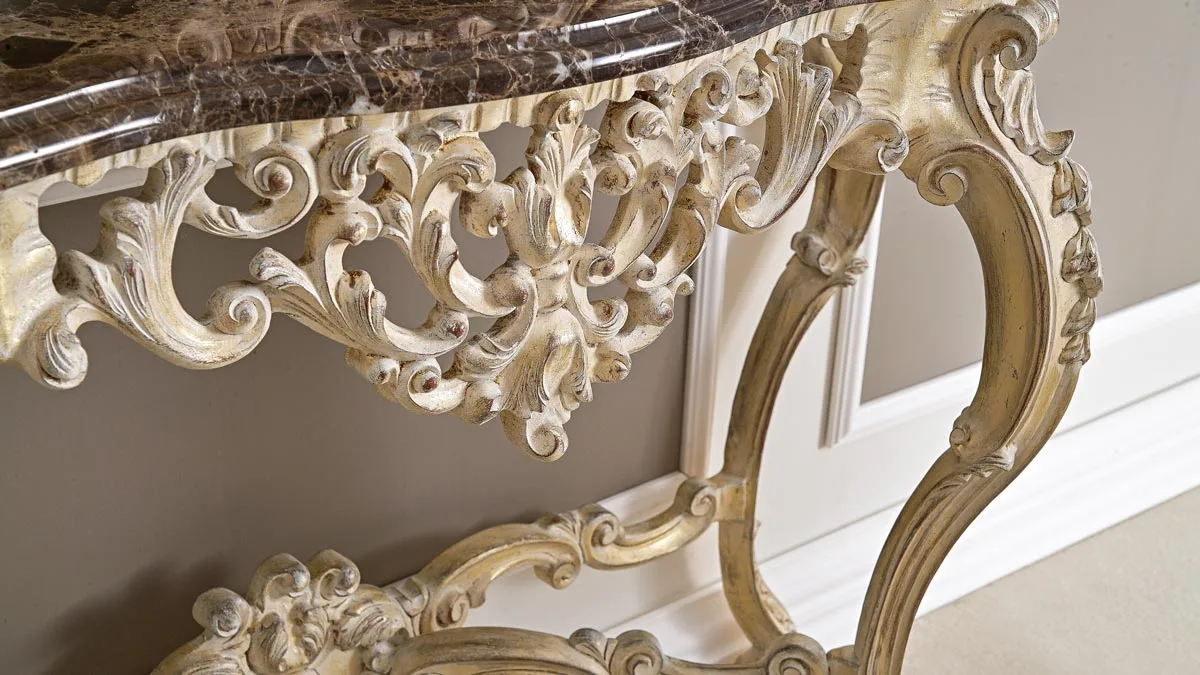
French Baroque furniture and Italian Baroque furniture, while sharing the grandiosity and opulence characteristic of the Baroque period, exhibit distinctive features that reflect their unique cultural influences. Understanding these differences is crucial when selecting pieces for upscale venues such as hotels and restaurants.
French Baroque Furniture: French Baroque furniture is renowned for its intricate carvings, elaborate ornamentation, and regal elegance. The design often features motifs like acanthus leaves, shells, and classical figures, exuding a sense of grandeur and refinement.
French Baroque chair, commonly used as hotel chairs or restaurant chairs, are typically upholstered in luxurious fabrics such as velvet or silk. These chairs often have cabriole legs, curved backs, and gilded accents, creating a sophisticated ambiance. The opulence and attention to detail make French Baroque furniture an excellent choice for high-end dining establishments and luxury hotels, where creating a lavish and inviting atmosphere is paramount.
Italian Baroque Furniture: Italian Baroque furniture, while equally luxurious, tends to emphasize boldness and dynamic movement. The designs often incorporate dramatic contrasts, with dark woods like walnut or mahogany highlighted by gold or bronze embellishments.
Baroque Italian chairs are known for their robust structure and elaborate carvings, featuring intricate scrolls, cherubs, and floral designs. These chairs, ideal for use in prestigious restaurants and hotels, offer a balance of elegance and durability, ensuring both aesthetic appeal and practical use. The use of rich, dark wood in combination with sumptuous upholstery adds to the opulent feel, making them perfect for settings that aim to impress.
Both styles, however, provide a level of sophistication and luxury that can elevate the decor of any restaurant or hotel. Choosing between them depends on the desired atmosphere: French Baroque for refined, understated opulence, and Italian Baroque for a more vibrant, dramatic effect.
In conclusion, both French and Italian Baroque furniture offer unique benefits for upscale venues, enhancing the aesthetic appeal and providing a memorable experience for guests. Whether opting for the elegant curves of a French Baroque chair or the bold statement of a Baroque Italian chair, these pieces are sure to impress.
Louis XV style furniture, known for its rococo elegance and intricate craftsmanship, epitomizes the opulence and refinement of 18th-century French design. Characterized by its graceful curves, ornate carvings, and luxurious materials, Louis XV furniture is an ideal choice for high-end venues seeking to create a sophisticated and inviting atmosphere. For this reason, Louis XV Baroque furniture is an ideal restaurant furniture because it seamlessly blends artistic elegance with functional comfort, elevating the dining experience, by offering guests a luxurious and aesthetically pleasing environment that reflects both historical grandeur and contemporary sophistication.
One of the most distinctive features of King Louis XV furniture is its emphasis on asymmetry and fluid lines. Louis XV French Chairs, tables, cabinets and armchairs from this period often feature cabriole legs and scrolling, floral motifs that mimic the natural forms found in nature. The use of high-quality woods such as walnut, mahogany, and rosewood, combined with rich upholstery fabrics like silk, velvet, and brocade, further enhances the luxurious feel of these pieces.
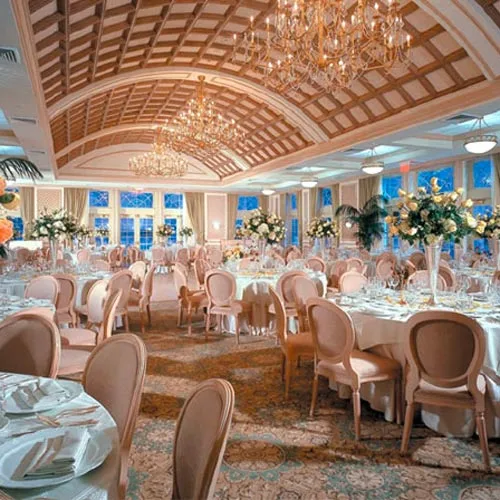
The elaborate detailing and exquisite craftsmanship make each piece a statement of elegance, contributing to a refined and luxurious ambiance. Whether it's a grand lobby, an intimate dining room, or a lavish suite, Louis XV furniture can transform any space into a setting of unparalleled sophistication.
The versatility of Louis XV style furniture is another key advantage. Its timeless design can complement a variety of interior styles, from classic to contemporary, making it a versatile choice for decorators and venue managers. The intricate carvings and curved forms of Louis XV pieces can add a touch of romance and historical charm to modern spaces, creating a balanced and harmonious environment.
Furthermore, Louis XV furniture is not just about aesthetics; it also offers superior comfort. The ergonomic designs of chairs and sofas ensure that guests can relax in style, making them ideal for long dining experiences or leisurely lounging in high-end hospitality settings.
In conclusion, Louis XV style furniture is perfect for high-end venues that prioritize elegance, comfort, and timeless beauty. Its rich history, luxurious materials, and exquisite craftsmanship make it a worthy investment for any venue aiming to provide an exceptional and memorable experience for its guests.
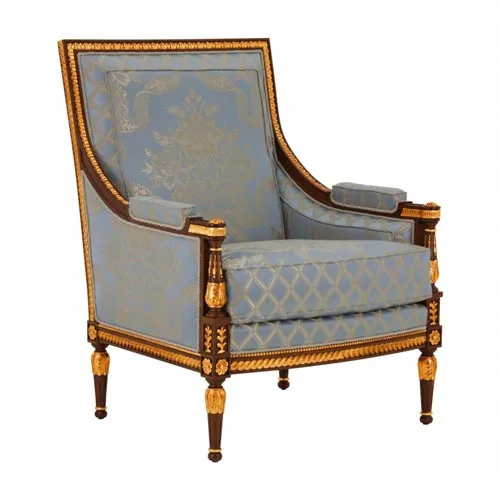
King Louis XVI style furniture represents a shift towards neoclassicism, characterized by its elegant and restrained design that contrasts with the ornate rococo style of Louis XV furniture. Emerging in the late 18th century during the reign of King Louis XVI, this style reflects a renewed interest in classical antiquity, emphasizing symmetry, straight lines, and geometric shapes.
One of the most notable features of Louis XVI furniture is its simplicity and refined elegance.
Chairs and tables from this period often have straight, tapered legs that are fluted, resembling classical columns. The decorative elements are more restrained compared to Louis XV furniture, featuring motifs such as laurel wreaths, rosettes, and ribbons, which are inspired by ancient Greek and Roman art.
In comparison, King Louis XV furniture is known for its curvaceous forms, asymmetry, and elaborate carvings. The rococo style of Louis XV emphasizes fluidity and naturalistic motifs like flowers, shells, and foliage, creating a sense of movement and whimsy. The cabriole legs and extensive use of gilding and intricate marquetry are hallmarks of Louis XV pieces, which are more flamboyant and decorative than the neoclassical designs of Louis XVI.
Louis XVI furniture design is perfect for high-end venues looking to create a sophisticated and timeless atmosphere. Its clean lines and classical proportions lend an air of understated luxury, making it ideal for elegant hotel lobbies, refined dining rooms, and exclusive event spaces. The restrained ornamentation of Louis XVI furniture can complement both traditional and contemporary interiors, providing versatility in design.
The use of high-quality materials such as mahogany, walnut, and satinwood, often combined with luxurious upholstery fabrics like silk and velvet, ensures that Louis XVI pieces are not only beautiful but also durable. The ergonomic design of Louis XVI chairs and sofas offers comfort, making them suitable for prolonged use in hospitality settings.
In conclusion, King Louis XVI style furniture, with its classical elegance and refined simplicity, offers a timeless appeal that is perfect for high-end venues. Its contrast with the more ornate and whimsical Louis XV style highlights a return to classical ideals, providing a sophisticated and versatile option for creating luxurious and inviting spaces.
Louis XVI replica chair: the perfect restaurant chair
The Louis XVI replica chair embodies timeless elegance and sophistication, making it the perfect choice for upscale restaurants. With its refined lines, classic proportions, and exquisite detailing, this chair adds a touch of French aristocratic charm to any dining environment.
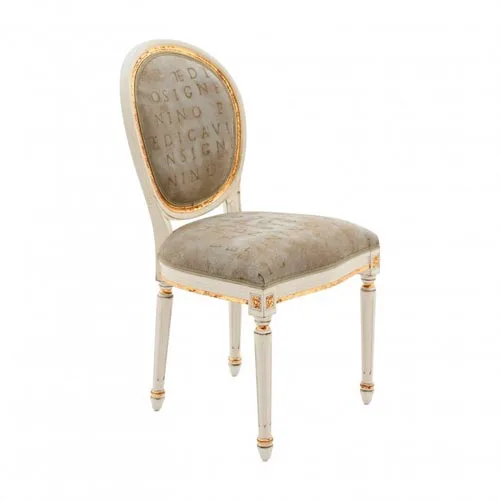
Produced by Sevensedie, a renowned manufacturer of high-quality furniture, these chairs are crafted with meticulous attention to detail, ensuring both beauty and durability.
Sevensedie offers a comprehensive range of chairs, armchairs, sofas, and tables in the Louis XVI style, each piece exemplifying the elegance and refinement associated with this period. The Louis XVI replica chairs, with their elegant fluted legs and delicate carvings, are particularly well-suited for the restaurant setting. They provide not only a visually appealing seating option but also exceptional comfort, enhancing the dining experience for guests.
In addition to restaurant furniture, hotel furniture plays a crucial role in defining the ambiance and comfort of hospitality spaces. The Louis XVI style, with its emphasis on symmetry, clean lines, and intricate details, brings a sense of grandeur and sophistication to hotel interiors.
From opulent lobbies adorned with majestic sofas and armchairs to elegant guest rooms featuring finely crafted beds and dressers, Sevensedie?s Louis XVI furniture for the hotel ensures a cohesive and luxurious aesthetic throughout the establishment.
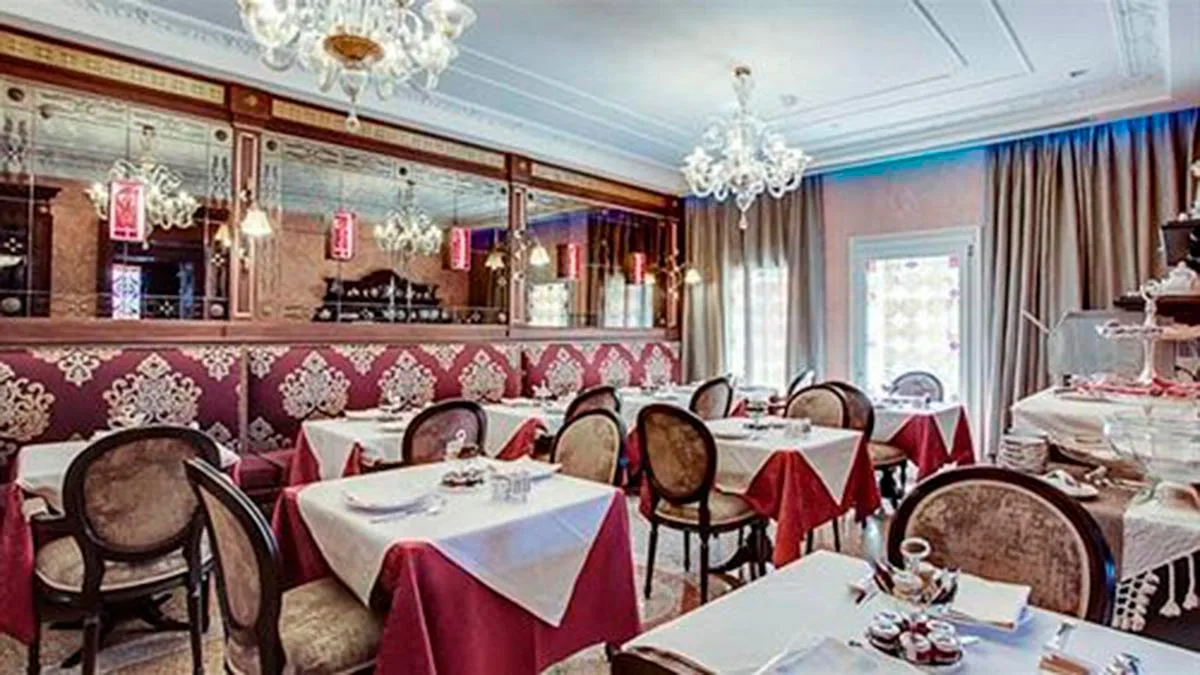
Their Louis XVI style furniture seamlessly blends into luxurious homes as well as high-end hospitality venues, offering versatility and style. The refined aesthetic of these pieces makes them ideal for creating an inviting and sophisticated atmosphere in any setting.
For restaurants and celebration venues, Sevensedie also produces stackable chairs and stackable armchairs in the Louis XVI style, which are perfect for restaurants and celebration venues.
The stackable design provides practical benefits without compromising on elegance. These chairs can be easily stored and moved, allowing for flexible seating arrangements to accommodate varying numbers of guests. This is particularly useful for venues that host events and celebrations, where space and seating requirements can change frequently.
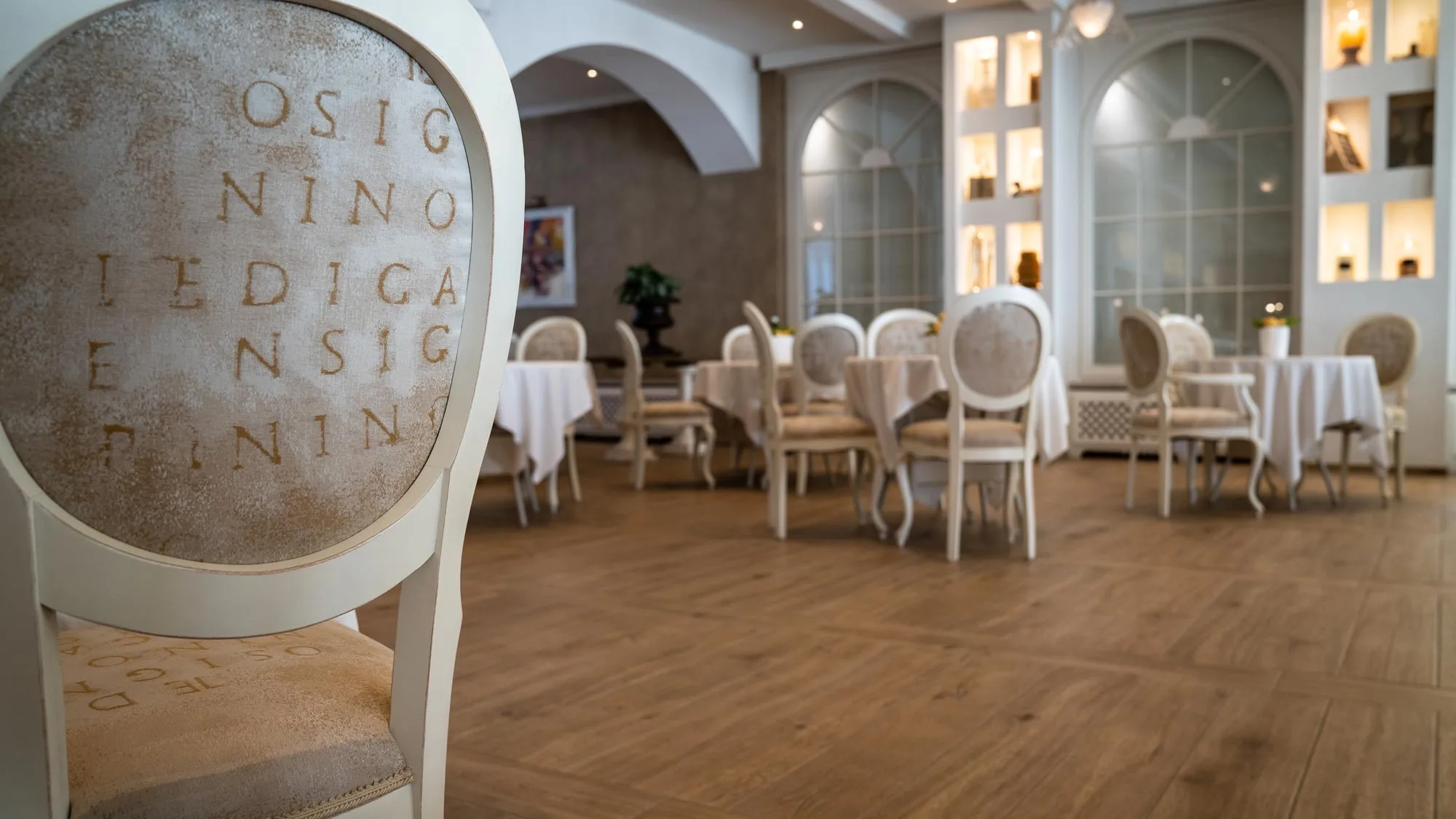
In hotel dining areas, the versatility of stackable Louis XVI chairs can be especially advantageous. Hotels often need to reconfigure their dining spaces for different occasions, such as banquets, conferences, or private functions. The ability to effortlessly rearrange seatings without sacrificing the sophisticated look is a key advantage that Sevensedie?s hotel furniture offers.
Moreover, the durability of Sevensedie?s Louis XVI furniture ensures that these pieces can withstand the high traffic and frequent use typical in hotel and restaurant environments. The use of premium materials and expert craftsmanship guarantees that each item maintains its structural integrity and visual appeal over time, providing a lasting investment for any hospitality venue.
In conclusion, the Louis XVI replica chair by Sevensedie is the perfect restaurant chair, combining timeless elegance with practicality.
Whether for a fine dining restaurant, a grand celebration venue, or a luxurious residential space, Sevensedie's wide range of Louis XVI style furniture offers the ideal solution, ensuring an ambiance of sophistication and comfort for all guests.
From hotel lobbies and guest rooms to upscale dining establishments, Sevensedie?s furniture enhances the overall experience, making every setting a testament to refined taste and enduring quality.
Louis Philippe style furniture, named after King Louis Philippe I who reigned in France from 1830 to 1848, represents a blend of elegance and functionality, embodying the bourgeois comfort of the period. This style marks a departure from the ornate designs of earlier periods, favoring more practical and understated pieces while retaining a sense of refined taste.
Chairs, armchairs, and sofas designed in the Louis Philippe style are characterized by their solid, yet graceful appearance. The lines are gentle and rounded, with an emphasis on comfort and utility. One of the defining features is the use of dark woods, such as mahogany and walnut, often polished to a high sheen to highlight the wood's natural beauty. This choice of materials adds a sense of warmth and richness to the furniture.
Louis Philippe chairs typically feature simple, rounded backs and cabriole or straight legs, eschewing the elaborate carvings of previous styles for more subtle ornamentation. These chairs are often upholstered in durable, high-quality fabrics such as velvet or leather, providing both comfort and durability. The upholstery is usually plain or features modest patterns, aligning with the overall aesthetic of understated elegance.
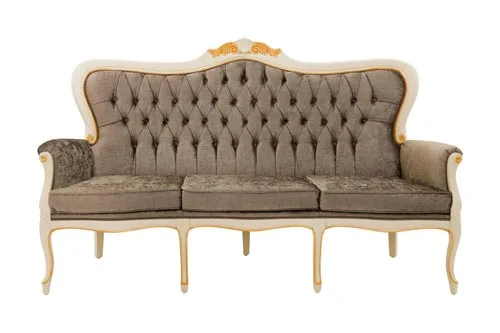
Armchairs and sofas in the Louis Philippe style follow similar design principles. They offer deep, comfortable seating, with well-padded cushions and backs that provide excellent support. The frames are sturdy and well-constructed, ensuring longevity. The arms of these chairs and sofas are typically curved and padded, enhancing the comfort for the user. The use of tufting and button details adds a touch of sophistication without overwhelming the simplicity of the design.
This style of furniture is particularly well-suited for high-end residential settings as well as elegant hospitality environments. Their blend of comfort and refined design makes Louis Philippe chairs, armchairs, and sofas ideal for hotel lobbies, upscale restaurants, and exclusive lounges. The timeless appeal of these pieces allows them to blend seamlessly with various interior decor styles, from classic to contemporary.
Conclusion
In conclusion, Baroque furniture, with its opulent and intricate designs, continues to captivate and inspire both collectors and interior designers.
This article has explored the defining characteristics of Baroque furniture, focusing on the quintessential Baroque chair and its ornate details. We have journeyed through the luxurious realms of French and Italian Baroque furniture, highlighting the subtle yet significant differences in their design and craftsmanship.
The evolution of Baroque furniture through the Louis XV and Louis XVI styles demonstrates a fascinating transition from the elaborate rococo elegance of Louis XV to the neoclassical restraint of Louis XVI.
Each style brings its unique flair, with King Louis XV furniture offering a romantic, whimsical aesthetic, while Louis XVI pieces exude a more refined and classical elegance. The Louis Philippe style marks a return to simplicity and functionality, yet retains the luxurious essence of its predecessors, making it particularly suited for both high-end residential and hospitality environments.
By examining the specific characteristics of these styles, such as the intricate carvings of Louis XV furniture, the classical lines of Louis XVI pieces, and the solid, graceful design of Louis Philippe furniture, we see how these historical designs continue to influence modern interior decor.
Louis XVI reproduction chairs, for instance, provide a perfect blend of timeless elegance and practicality, ideal for upscale restaurants and event venues, thanks to their refined aesthetics and comfort.
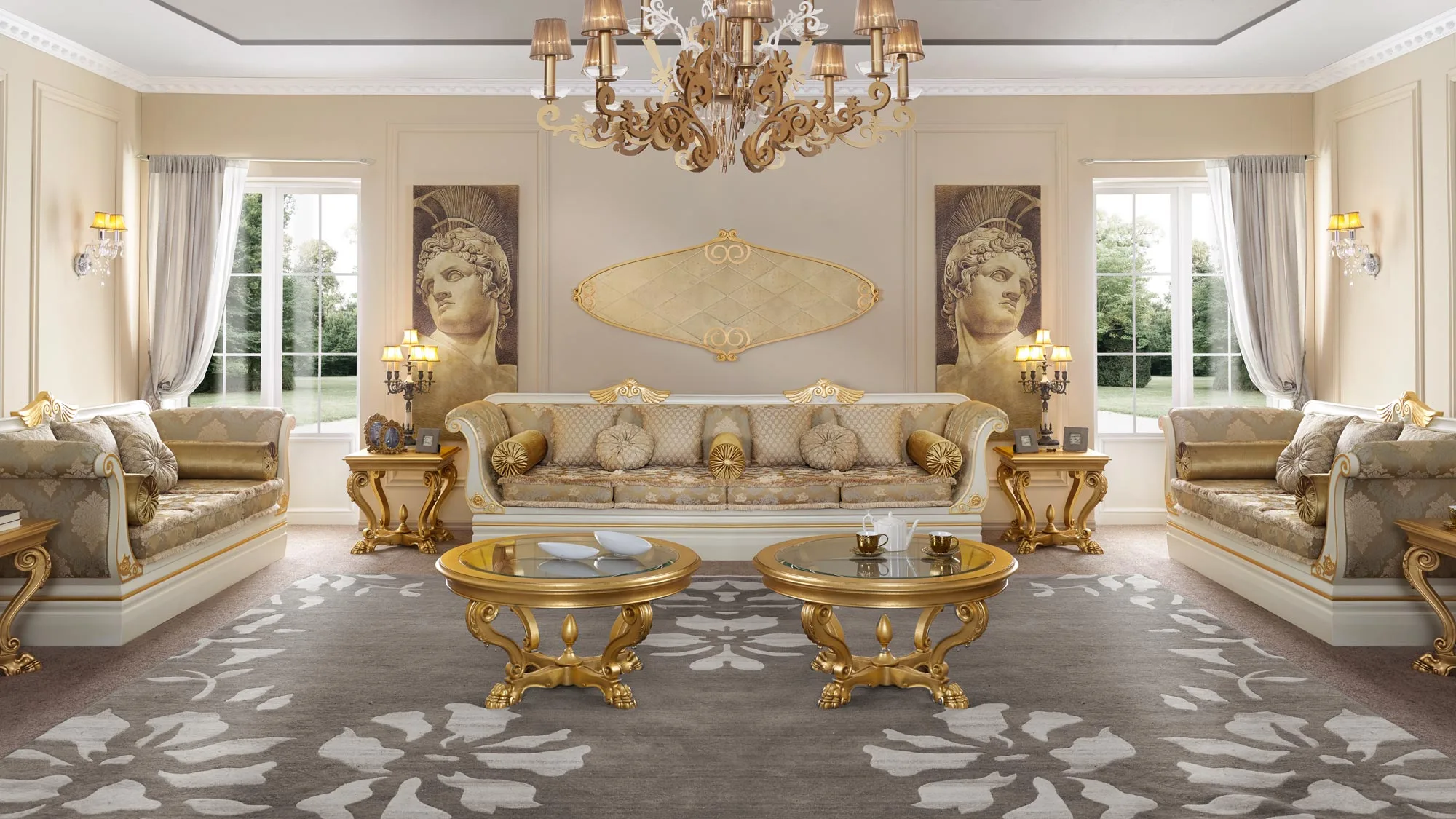
Baroque Furniture:
Era: Baroque furniture directly refers to pieces created during the Baroque period, which spanned from the late 16th century to the early 18th century (approximately 1600-1750). This was an era known for its grandeur, drama, and highly decorative arts, influenced by the Baroque art movement that emerged in Europe, particularly in Italy and France.
Design Characteristics: Baroque furniture is recognized for its opulent, elaborate, and ornate designs. It often features intricate carvings, bold contrasts, and luxurious materials. Common motifs include swirling scrolls, acanthus leaves, cherubs, and other dramatic elements. The furniture was designed to impress and convey power, wealth, and status.
Baroque Style Furniture:
Design : "Baroque style furniture" generally refers to furniture that is inspired by or designed in the style of the Baroque era, but not necessarily made during that time. It might be a reproduction or a modern piece that incorporates the key elements of Baroque design, such as its ornate and elaborate features.
Contemporary Context: When the term "Baroque style" is used today, it often applies to furniture that adopts the lavish and intricate design aesthetics of the Baroque period but is crafted with modern techniques and materials. This can include furniture designed for contemporary spaces that seeks to evoke the drama and luxury of Baroque design without being an antique. Furniture from a specific Baroque period (such as Louis XV, Louis XVI and Louis Philippe) retain a link to their Baroque roots, although they pass through different aesthetic phases and can be considered as specific Baroque styles.
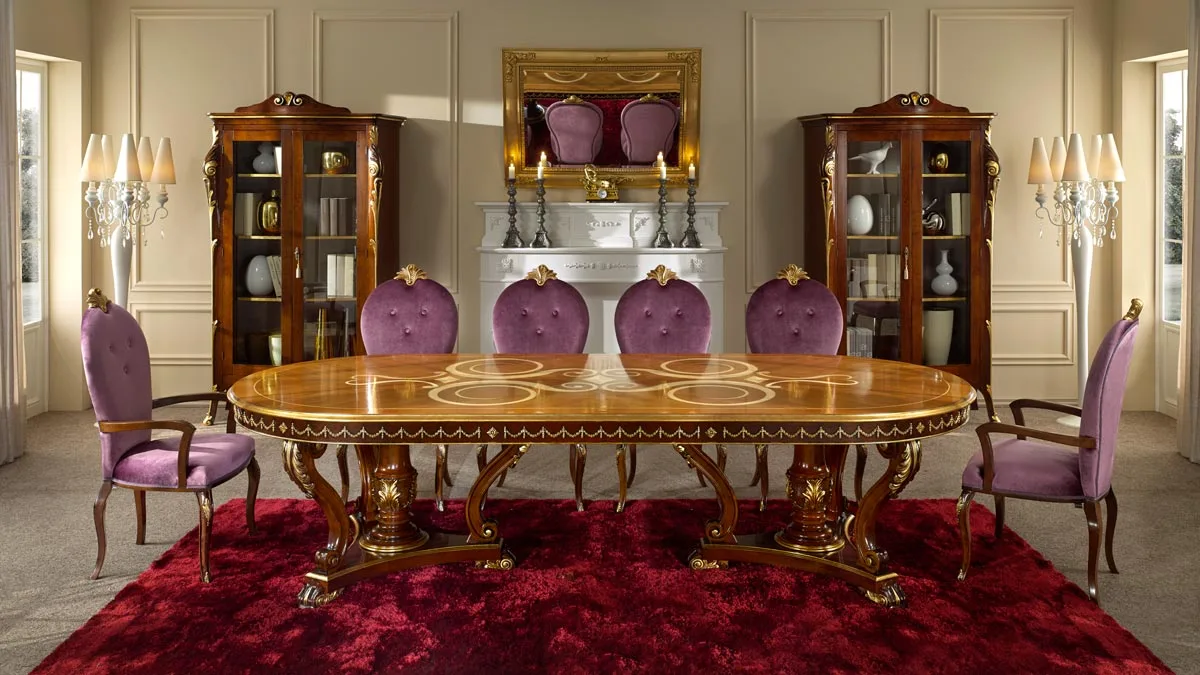
Ultimately, the grandeur of Baroque furniture lies not just in its historical significance but in its ability to transform contemporary spaces with a touch of timeless luxury.
Whether for a collector, an enthusiast, or someone curious about Baroque style furniture, understanding these distinctive styles offers valuable insights into the artistry and legacy of this magnificent era. From the opulent Baroque chairs to the versatile Louis Philippe pieces, these furnishings continue to elevate the ambiance of hotels, restaurants, and luxurious villas, ensuring both aesthetic appeal and guest comfort.
The terms "Baroque style furniture" and "Baroque furniture" refer to two closely related concepts but can be differentiated based on their specific meanings.
Are you an Architect, a Retailer, or an Importer of Made in Italy furniture? Your business belongs to the Hospitality sector? If you are interested in our products, please contact us.
Special offers
Subscribe to our newsletter if you want to take advantage of our exclusive offers for the B2B sector, receive the catalog with new products or meet us at an international furniture fair.
Sign up

